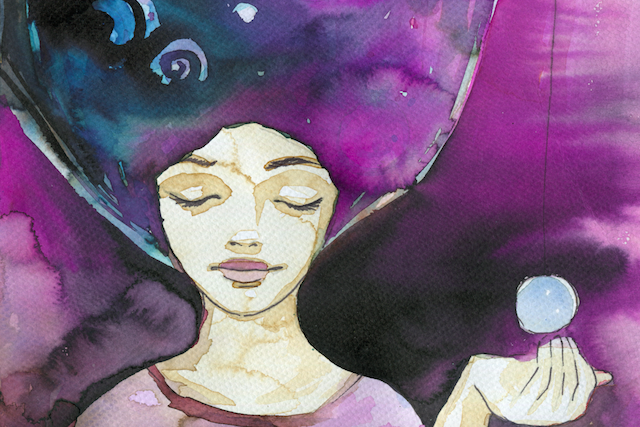
“Time is not a cure for chronic pain, but it can be crucial for improvement. It takes time to change, to recover, and to make progress.” ~Mel Pohl
Let’s face it, living with any kind of physical pain is a challenge. I understand that completely. In the fall of 2007, I contracted an extremely painful and debilitating condition, Thoracic Outlet Syndrome, a structural collapse that compresses the muscles, nerves, and arteries that run between the collarbones and first ribs.
Yet, as most of us do, I believed my condition would, naturally, clear up soon and the pain would leave. That’s what happens most of the time for most of our physical ailments. Pain arises because of an illness or injury and disappears as we heal over the following days or weeks. We might lay low for a while, take some medications to ease the discomfort, and then we’re back into the swing of things. No problem.
Except when it doesn’t work that way.
What happens when pain becomes a fixture in our lives and no amount of medication or treatment or therapy can eradicate it? What do we do then?
Our usual response is to fight. We put on our battle armor and spend every day in an effort to overcome pain so it won’t take over any more of our lives. We search for the right therapies and the right medications, trying one approach after another, with the attitude of defeating a mortal enemy.
If nothing works, we eventually exhaust ourselves. We wake up one morning with our anti-pain armor in a heap on the floor and find we have no more reserves to fight, so we leave it there. We just don’t have the energy to go into battle anymore.
So, we swing to the other end of the spectrum, deciding that the best thing to do now is to ignore the pain we’re living with. This is just the way it is right now, we say to ourselves. These are the cards I’ve been dealt and I’m going to have to live with the situation. We put on our best face and try to function despite the pain, doing our best to ignore its insistent cries for attention.
We may even decide the doctor is right if s/he tells us that the reason we’re still in pain isn’t because our condition won’t heal, but because our brain is misfiring. Okay then, I’ll put the blame on my brain and pretend the pain doesn’t exist, we say.
But the pain stays and stays and stays.
Neither of these extremes usually works very well for chronic pain. Fighting pain is exhausting. It creates stress and tension not conducive to healing. Fighting causes us to tighten and contract in the body, also not great for healing. Acquiescing, on the other hand, can lead to feelings of helplessness and hopelessness over time. If pain isn’t improving, one day we might find ourselves looking up from the bottom of a dark well, filled with despair.
Are these really our only choices? Isn’t there a middle path that might offer something less fatiguing than constant battle and less hopeless than acquiescence or denial?
What do we do? What can we do?
I spent years swinging back and forth between the two poles, finally settling into a kind of stoic silence until one day I couldn’t stand it anymore. I just couldn’t face a life sentence of living in unremitting pain. I decided there had to be a different way to live, to find more ease and grace even in the midst of pain.
So, I decided to turn my belief about what pain is and how I was dealing with it on its head. I changed the way I perceived pain and the way I responded to it. I found ways to shift my relationship with pain into a more positive, constructive one and, after many years of having no perceptible change, began to finally experience some relief.
Here are three important ways I shifted my relationship with pain and thereby began to experience more healing in my body.
Making Friends with Pain
It helped me a great deal to understand that pain is not an enemy but a signal and a message that tells us that the body is trying to heal. Pain is a voice from within that announces that something is out of harmony and is trying to put itself right. Instead of experiencing pain as torture, I began to understand that it was a natural communication from my body. In a way, it was me talking to me. A part of me was hurting and asking for attention.
Since fighting pain only seemed to make things worse, I asked myself, what if I imagined that pain wasn’t an adversary, but had a positive purpose? What if pain wasn’t trying to put me through hell, but was simply trying to get my attention? How could I make friends with it instead of opposing it?
I began to ask pain what it needed, what it was asking for, what I could give it and do for it to help my body heal. I understood that it was asking me to slow down, both on the outside and on the inside. Pain needed me to be with it just as it was, to stop pushing against it, and to listen to it.
What I learned from pain was that, instead of offering it my anger, denial, or hate, it required a very different kind of attention. The pain, the signal from my body, was asking for a different approach to healing, a softer approach.
I understood it to be asking for the kind of compassion and understanding you would offer a small child who is hurting. I found that when I turned a more loving ear toward it in an effort to listen to it, respect it, and offer it kindness, my whole body relaxed, my breathing shifted, my stress lifted, and my pain began to decrease.
Finding Positive Ways to Express Pain
I began to journal about living with pain, which helped me see it differently. I wrote about my emotional responses to living with pain. I wrote about the loss and the loneliness, the shame and the frustration. Then I read what I wrote out loud to pain, and to myself. We both listened. Something shifted. We both relaxed. Pain started to move.
I then went a step further and found someone I could trust to hear my pain story. I asked them to please not offer any advice, to not try and fix me, but just to listen with an open heart and mind. I told them about the sadness and the terrors, the loneliness and the shame. I told them things I had never told anyone because I was simply trying to hold it all together from one day to the next.
Having someone simply witness me in my pain without asking me to be any different, but allowing me to be in the pain I was in and really seeing it and acknowledging it was hugely healing. And pain relaxed a little more.
Allowing Pain the Time it Needs
I also discovered that pain was asking for time. Healing simply wasn’t going to be rushed. My body didn’t respond well to being hurried or pushed, and healing could not be approached as another goal to be achieved. Pain kept its own timetable.
Allowing pain to take the time it would take rather than trying to hurry it out of my body allowed for a healthier emotional and physiological response that was far more conducive to healing. My body became more relaxed around the pain and I began to release stress, tension, and contraction. I breathed more freely, moved more slowly, approached everything in a more relaxed manner, and stopped obsessing as much about my healing.
I stopped pushing against the pain and pushing against the situation and began to trust the healing process. Paradoxically, when I allowed pain all the time it needed to heal, it began to release. When I demanded that it leave immediately, it dug in its heels, but when I related to it soothingly and with patience and love, I felt relief more rapidly.
—
I have found over my years of living with chronic pain, that these approaches are fundamental to creating more ease and grace on a daily basis, to releasing stress and tension in the body, and to relieving long term pain. None of them are guarantees of becoming pain free overnight, but all can offer relief, hope, and positive shifts almost immediately and, as those of us who have been living with pain for a long time know, any movement toward relieving pain is cause for major celebration.
I’ve gained valuable insights from my journey with pain as well. I’ve learned to find a place deep within myself, a clear place at my core that is resilient and eternal, a place I can draw on for strength and comfort in any situation. I’ve learned how to be kinder to myself and to others. I’ve learned how to find new appreciation and satisfaction in simple things and to celebrate the small joys in life.
Pain, then, has become something of a spiritual mentor over time. It has, in the end, taught me how to live more deeply, more authentically, and more wisely. Living with pain has not only helped me understand what really matters most to me in life, but how much I matter to myself.
About Sarah Anne Shockley
Sarah Anne Shockley is the author of The Pain Companion. In the Fall of 2007, she contracted Thoracic Outlet Syndrome (TOS) and has lived with debilitating nerve pain ever since. She has been a columnist for Pain News Network and is a regular contributor to The Mighty, a 1.5 million–member online community for those living with chronic illness and pain. Visit her online at ThePainCompanion.com.













 Though I run this site, it is not mine. It's ours. It's not about me. It's about us. Your stories and your wisdom are just as meaningful as mine.
Though I run this site, it is not mine. It's ours. It's not about me. It's about us. Your stories and your wisdom are just as meaningful as mine. 